Having grown cabbage on your site or having made a purchase for the winter, you want to keep vegetables until the next harvest! How to store cabbage in a cellar or cellar, and which varieties should be preferred for long-term preservation?
Material Content:
Varieties of cabbage for long-term storage
Early varieties are suitable for fresh use only. Late-ripe varieties are perfectly stored all winter. The main advantage of late varieties is good keeping quality.
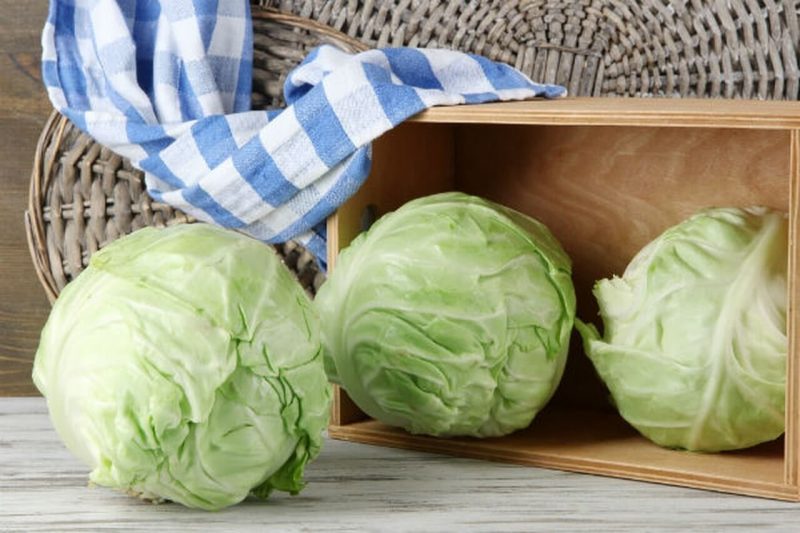
One of the best varieties to conserve is the Aggressor. It is grown in the central region. The variety has a developed head, valued for productivity. A head of cabbage can weigh up to 3 kg.
Belarusian breeders also bred a variety that is perfectly stored all winter. This is Mara cabbage. It has dense heads of cabbage weighing up to 5 kg. The variety is characterized by excellent keeping quality and high productivity.
Late Moscow is the pride of Russian breeders. The variety has been bred for a long time, but it still successfully competes with younger varieties. Cabbage is perfectly stored until the middle of next summer.

Another variety of Russian selection is Amager. The variety is medium late, and is distinguished by good keeping quality and high productivity.
A very popular variety among gardeners is Snow White. A head of cabbage can weigh up to 4.2 kg. Cabbage is well stored, has a high yield.
These are just some of the many varieties of white cabbage that are well stored and suitable for cultivation in the middle lane.
Preparing the vegetable for storage
To save cabbage without loss until spring, you need to properly prepare for the bookmark.
It is advisable to dig up cabbage in the garden with the leg in dry weather so that you do not have to work additionally. The upper leaves of the vegetable are not removed, as this leads to rapid spoilage. Surface leaves provide additional protection and significantly extend the storage of cabbage.
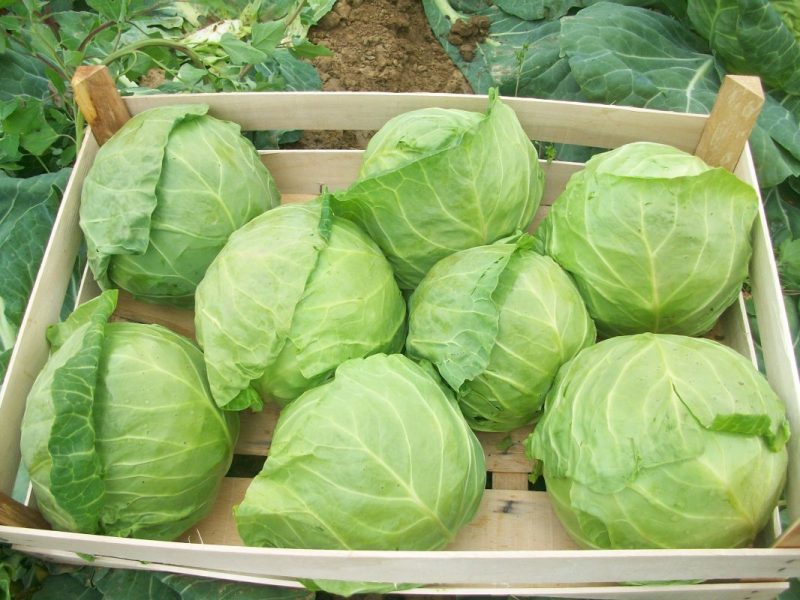
Not suitable for long-term storage:
- Hollow heads of cabbage;
- With traces of rot;
- Cracked;
- Frostbitten;
- Damaged by insects.
In no case should you wash the cabbage. Heads of cabbage are stored along with legs throughout the winter.
How to store cabbage in the cellar
Ideally, mesh racks up to 25 cm wide should be arranged in the cellar. At a short distance, cabbages are laid out on shelves upwards with stitches. You can wrap cabbage in paper.
Drawers with a capacity of up to 40 kg are also suitable. Forks in boxes are placed in only one layer, trying to ensure that they do not touch.
The surest way to keep the forks in the cellar until spring is to hang them by the stitches from the hooks to the ceiling. To do this, you need to tie the root with a rope, make a loop and hang the cabbage head down. This method is often used if there is catastrophically insufficient space in the cellar.
Preserving vegetables in the basement until spring
The basement of a private house is a great place to preserve crops throughout the winter until the next season. It is important that the basement has suitable conditions: the desired air temperature is from -1 to +1 degrees, humidity is about 85-90%.
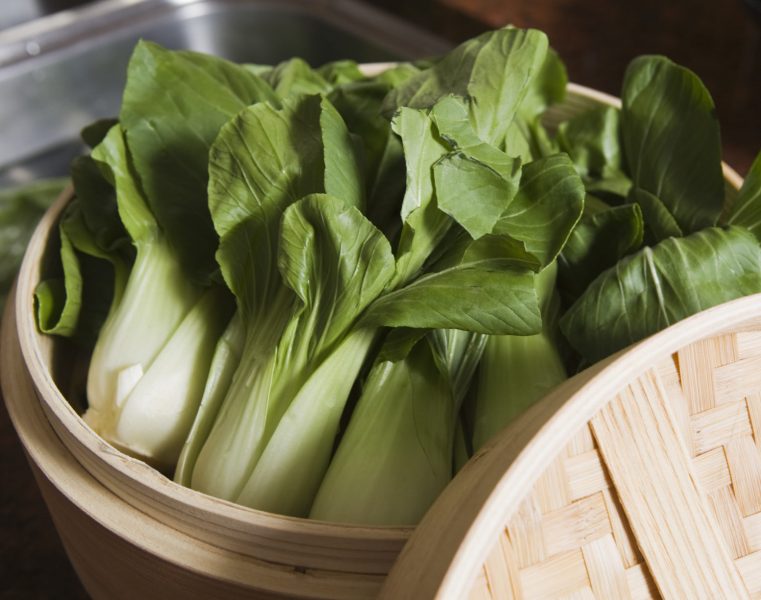
In addition to observing the conditions, you need to make sure that rodents that quickly destroy the entire crop will not be able to get into the basement.
Correctly store cabbage in cellars in drawers or on shelves, folding heads out so that they do not touch each other. You can also hang the forks by the stitches to the ceiling, just like in the cellar.
You can wrap the forks with cling film, which greatly extends the shelf life of the vegetable. Cabbage in several layers is wrapped with cling film and stacked on shelves.
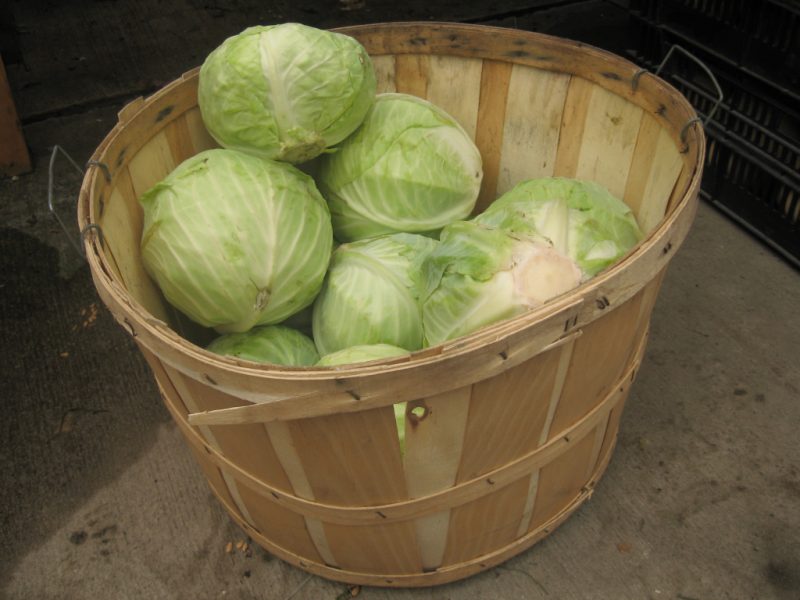
Until spring, you can save the crop in the basement by wrapping it in paper. Each forks is individually wrapped in several layers of food paper and cabbage is stacked in boxes.
Some gardeners keep the vegetable in a clay layer. This method is time-consuming, but gives positive results - the forks are perfectly stored. Each head should be coated with clay mash, let it dry. Then cabbage is put in boxes or laid out on shelves.
Neighborhood with other vegetables
Typically, cabbage is stored next door to other vegetables.
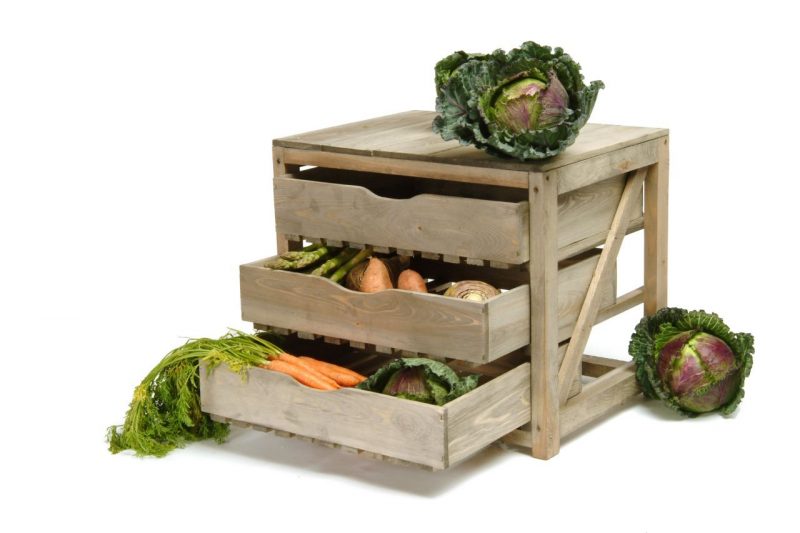
It can be stored next to such vegetables:
- potatoes;
- carrot;
- beet.
But best of all, to heads of cabbage lay some distance from other vegetables. It is advisable to put the boxes at least separately or not to put other vegetables on the shelves next to the heads of cabbage. In no case should you mix them with potatoes or other vegetables in the same box or pit.
Storage of sauerkraut in a cellar or basement
Sauerkraut in the cellar or basement can be stored until spring at + 4-1 degrees. Such a workpiece does not like heat, and even at a temperature of +10 degrees, fermentation will begin.
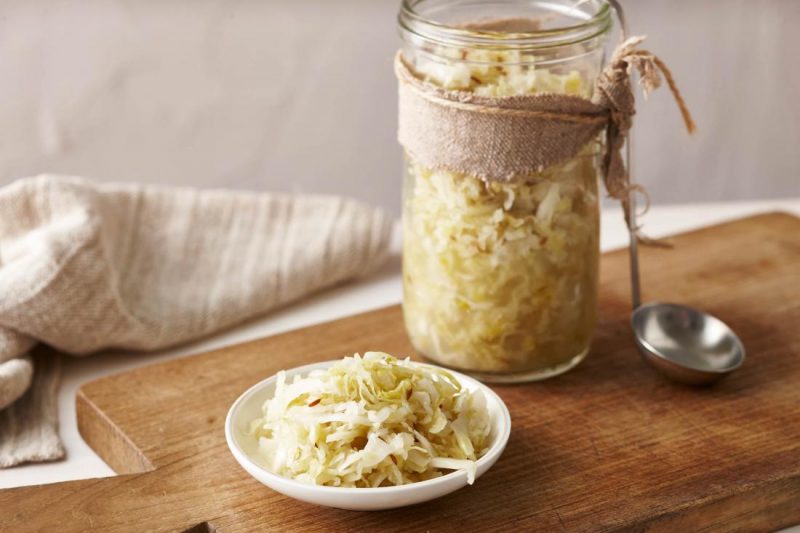
But even the conditions of a cool and dark basement do not exclude that a fungus will appear in the workpiece. The taste will certainly be spoiled, even if the hostess removes the spoiled top layer.
In order for the pickled billet to stand for as long as possible without loss of taste, the product in the container must be covered with brine. If there is not enough liquid in the workpiece, a press should be put on the cabbage.
To prevent the workpiece from deteriorating quickly, sprinkle sugar on top of it. For the same purpose, you can use apple cider vinegar or vegetable oil.
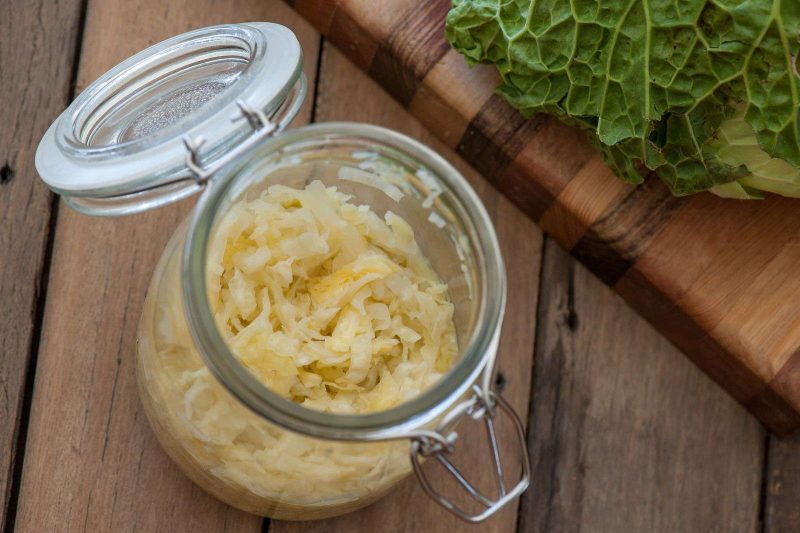
Many housewives add grated horseradish root. It helps sauerkraut to remain edible longer.
The ideal container for the workpiece is a wooden barrel, which does not change the taste of the product.Sauerkraut can also be stored in glass containers, placing containers on shelves in a cool room.
Features for individual varieties
Shelf life of different varieties is not the same, therefore, storage of cabbage in winter is somewhat different depending on the time of ripening of the variety and the density of the head. Early varieties are poorly stored. Poor keeping quality in varieties and with a loose head. Perfectly stored late cabbage with a head of cabbage.

Very important and agricultural technology of growing cabbage. If summer and autumn were rainy, then the harvest will be much more difficult to maintain. Excessive humidity causes the forks to become loose. Also, if the cabbage freezes, then it will not be stored for a long time. Important and good ventilation, especially at night.












